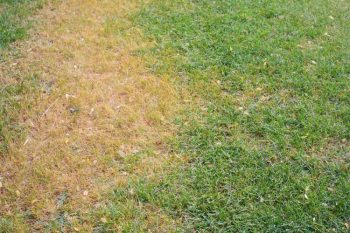 You may already be aware of the various fungal diseases that can affect the health and beauty of your grass. But did you know there is one that specifically targets Zoysia grass?
You may already be aware of the various fungal diseases that can affect the health and beauty of your grass. But did you know there is one that specifically targets Zoysia grass?
That’s right! Zoysia patch is a type of fungus that preys specifically on Zoysia grass. Like many fungal infections, zoysia patch looks for the following conditions in order to thrive:
- Poor drainage
- Extensive shade
- Thick thatching
- Poor circulation
As always, knowing what causes the problem is the key to identifying solutions- both active and preventative. This means that any areas of your lawn which are already prone to the conditions listed above may need some attention even if they look healthy right now. Why? -To ensure that they stay healthy.
Here are a few service pages that list how Ryno Lawn Care can assist in preventing fungal diseases before they set in:
- Aerating Services (for optimal circulation);
- Soil Rejuvenation (for dethatching);
- Lawn Irrigation (to ensure even watering without pooling/puddling).
 So What Does Zoysia Patch Look Like?
So What Does Zoysia Patch Look Like?
Zoysia patch creates diseased patches that often have a fiery orange outline when the infection is actively spreading. They can grow from 6 inches across, to as broad as 20 feet!
Like many fungal diseases, the inner grass blades will turn yellow or brownish and begin to wilt. Zoysia patch often has a “sunken” look in the center, once the infection has had a chance to do extensive damage to your turf.
Other Features to Keep in Mind
While Zoysia patch looks and acts similar to other fungus-based ailments, it behaves a bit differently in some ways.
For one thing, it is most likely to take hold in the cool weather of early spring or late fall here in North Texas. Our extensive list of common North Texas Lawn Diseases illustrates how many of them thrive in either hot or cold temperatures. But this one is most likely to set in when the temperature is mild.
The other reason this disease is likely to set in during cooler weather is because partially dormant grass is more susceptible to its particular infection process. Zoysia grass that is either beginning to go dormant, or has not yet fully transitioned into active growth, are most likely to be affected. And of course these states of partial growth are most common as the seasons change and the soil is moderately cool.
Another distinguishing factor found in Zoysia patch is that it does not actually affect your grass bed’s root system. This is a good thing because it means that previously diseased portions of your lawn have a chance to fully recover. However, the recovery process can take several weeks to multiple months, even after the fungi has been eliminated.
Treating Zoysia Patch
As with all soilborne fungi, your best bet for treatment is to apply an effective fungicide at the first sign of trouble. There are several products available online and at your local gardening shop.
In addition to the preventative measures listed above, here are a few more things to consider:
- Using a fertilizer that is high in nitrogen will help discourage Zoysia patch from setting in and taking its toll.
- Reducing shade coverage where possible, by trimming trees and raising your yard’s canopy, can help decrease the likelihood of shade-loving fungal infections.
- Don’t over-water. An excess of moisture, especially in cool and shady areas, often helps fungi thrive and spread.
- Keep your yard clean! A buildup of debris welcomes all manner of intruders, including bugs, algae, and fungi. Check out our Leaf Removal Service page to find out how we can help.
- Bag and throw out your yard clippings if you’re trying to get rid of a fungal disease. Leaving the clippings in your freshly mown lawn will simply spread the microbes and risk additional disease patches.

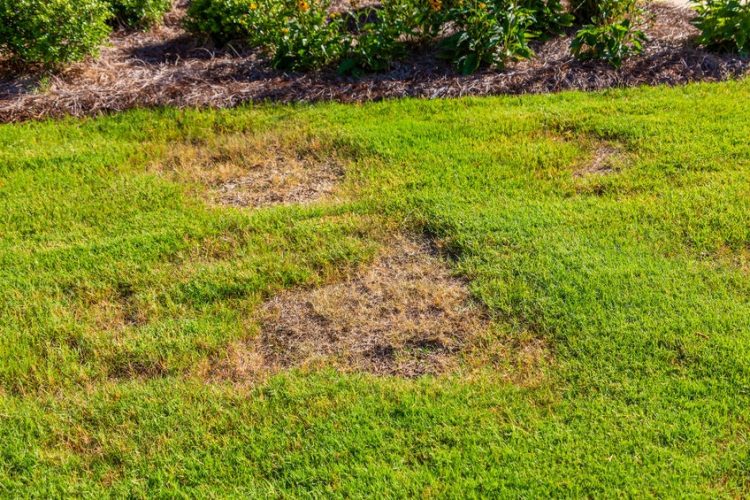
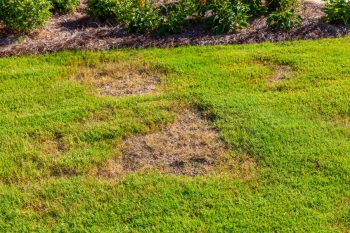 So What Does Zoysia Patch Look Like?
So What Does Zoysia Patch Look Like?
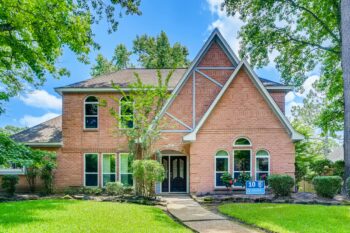
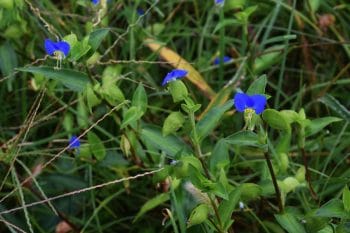
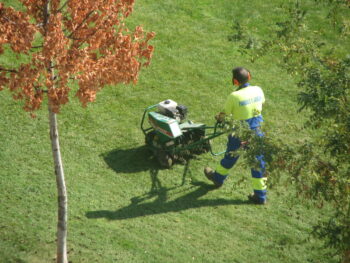
2 Responses
I put in new zoysia sod in November 2021. It went dormant a little after putting it down. The following spring (2022) when it started greening up it was looking good but didn’t seem to have very deep roots as I could still easily pull up pieces in a few spots. I applied fertilizer and treated the weeds which really helped. By mid spring it was looking really good. So good that I had several neighbors complementing how good it looked and asking what I was doing to make it look so good. It did really well through the remainder of the spring and summer. Then in the spring of 2023 it started greening up hood again except for a few spots in the front yard and most of the left side of of the house. The entire left side of our yard (left side of the house) is almost entirely brown and is matted down. The spots the front yard are similar but don’t look as bad because there is more healthy grass around them.
After doing some digging I’m thinking it might be zoysia patch. I live in Fort Worth. Do y’all offer one off service to diagnose and fix an issue like this or just ongoing lawn mowing, fertilizing, etc?
You can fill out a quote request, but something like that usually doesn’t get fixed in one treatment. It could be due to poor irrigation, or maybe it’s not even zoysia patch disease. We’ll have to come out and inspect to get a good idea of what is needed. Or if you want to email us some pictures, send to support@rynolawncare.com